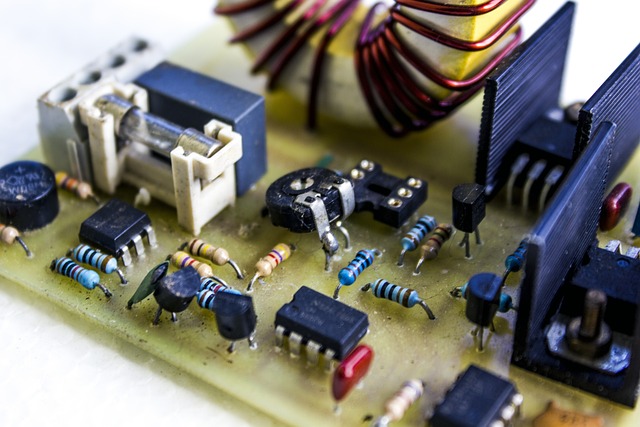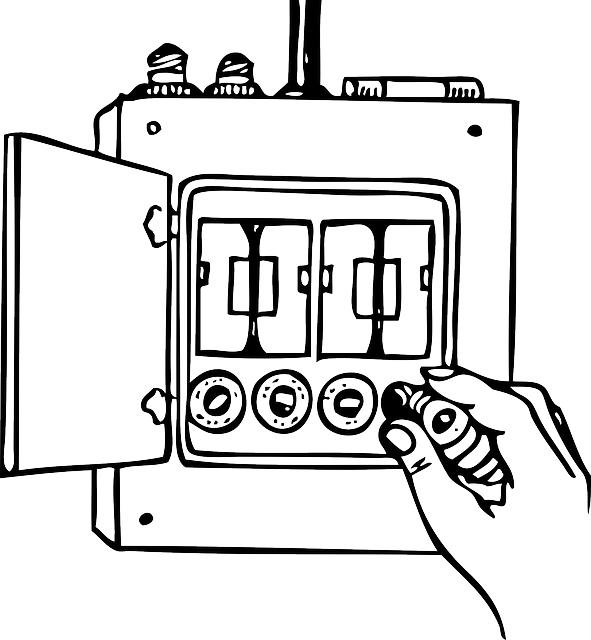In any electrical emergency, a meticulous scene assessment by electricians is crucial. They look for signs of arcing, smoking, or burning to locate faults and fires, and examine main panels for tripped circuits. Safety is paramount; all individuals must evacuate, and electricians wear PPE. This initial assessment allows them to devise an effective response strategy, prioritizing safety and minimizing damage, while homeowners benefit from electrician guidance for maintenance and protocol understanding.
In the face of emergencies such as power outages or electrical fires, a swift and professional response is crucial. This article guides electricians through assessing critical situations, taking immediate action, and implementing effective recovery strategies. From identifying the type of emergency to prioritizing safety, evacuating affected areas, donning proper protective equipment, restoring power safely, extinguishing fires using appropriate techniques, and conducting post-emergency inspections, every step ensures a comprehensive and secure response. Mastering these procedures is vital for electricians to protect both property and people.
- Assessing the Emergency Situation
- – Identifying the type of emergency: power outages, electrical fires, or other related incidents.
- – Evaluating the extent of damage and potential hazards.
Assessing the Emergency Situation

In any emergency situation involving outages or electrical fires, the first step for both individuals and professionals, like an electrician, is to assess the scene carefully. This involves quickly identifying the extent of the damage and understanding the nature of the crisis. An electrician will look for signs of arcing, smoking, or burning, which can indicate the location of the fault or fire. They may also need to check the main electrical panel for tripped circuits or damaged equipment.
During this critical phase, safety is paramount. The electrician must ensure that all individuals present are evacuated and at a safe distance from the hazardous area. They should also put on personal protective equipment (PPE) to safeguard themselves while they work. Proper assessment enables them to formulate an effective response strategy, ensuring everyone’s safety and minimizing damage.
– Identifying the type of emergency: power outages, electrical fires, or other related incidents.

In the event of an emergency, such as a power outage or an electrical fire, the first step for homeowners is to identify the nature of the crisis. This critical initial assessment guides the appropriate response and ensures the safety of all occupants. For instance, a power outage may involve a tripped circuit breaker or a downed power line outside, requiring immediate communication with the utility company. In contrast, an electrical fire demands swift action to cut off the power source at the main breaker and utilize fire suppression methods tailored for electrical fires.
Homeowners should be equipped to recognize the distinct signs of each emergency. An electrician can play a vital role in education on these topics, providing guidance on preventing and responding to such incidents. Regular maintenance and up-to-date knowledge about one’s electrical system are essential tools in mitigating risks and knowing when to call for professional assistance during an emergency.
– Evaluating the extent of damage and potential hazards.

When responding to emergencies like power outages or electrical fires, the first step for any electrician is to carefully evaluate the situation. This involves assessing the extent of damage to electrical systems and identifying potential hazards. Electricians need to be vigilant in detecting signs of arcing, sparking, or smoke, as these could indicate active electrical faults that pose significant risks.
They must also consider the safety of individuals in the area and ensure that all necessary precautions are taken. This includes turning off power at the main circuit breaker if safe to do so, wearing appropriate protective gear, and verifying the absence of live wires or other hazards before proceeding with any repair work. Proper evaluation enables electricians to respond effectively, minimizing damage and ensuring the safety of everyone involved.
In the event of an emergency such as a power outage or electrical fire, quick and professional response is crucial. An electrician plays a vital role in assessing and navigating these situations, ensuring safety and minimizing damage. By identifying the specific emergency and evaluating its scope, they can efficiently implement solutions to resolve the issue, making them indispensable in critical moments.
